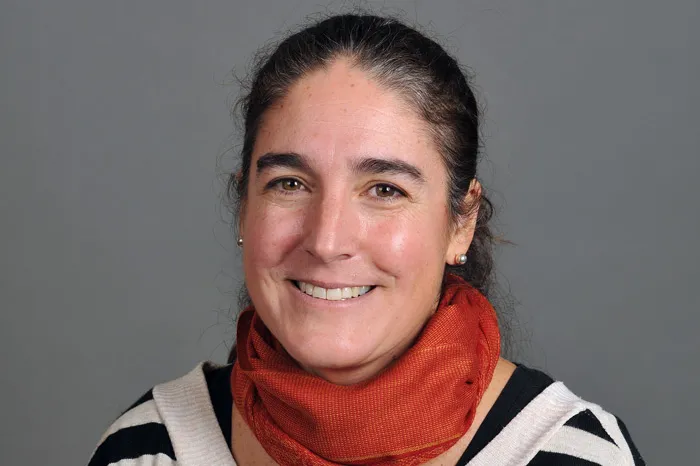
The juxtaposition of vibrant beauty and a commentary on the impacts of extractive wealth are on display in Gallery 310 and the Atrium Gallery at Marietta College's Hermann Fine Arts Center beginning Monday, August 30.
"Oro No Es/ Gold is it Not?" utilizes hand-dyed sisal from the agave plant, spray foam, netting, wood and handmade paper to approach the dialogue of colonialism and the extraction of wealth over the span of hundreds of years.
"All of the work is gold, or gold-related," described 3-D Artist Micaela de Vivero, as she installed the pieces suspended from the ceiling beams with fishing line. "I started working with gold some time ago, always making reference to Ecuador. I'm from Ecuador originally and we do have a history with colonialism and what's happened with Spanish colonization coming to the land and taking a lot of the gold with them away Really how the monetary was so important at that time shows clues into the decision-making processes."
And the generations used as an extracted labor force left a dichotomy she still experiences when walking into places of worship plated with gold.
That invitation for thought and discussion prompted this showing, which Jolene Powell, McCoy Professor of Art and Director of Gallery 310, said has been in the making since before the pandemic.
"I like to select artwork that is both aesthetically pleasing and has a message, being that this is an educational space," Powell said. "For me, the muted paper curves and shifts to illuminate the gold edges and folds, representing how much of European and American wealth comes from force and viciousness to countries such as Ecuador, that still today struggle with violence and poverty."
Two-dimensional paper pieces are the newest addition to the show, with Vivero describing the work completed throughout the pandemic as a stretch out of her comfort zone of sculpture. But Vivero's colleague and Professor Emerita at Denison University Joy Sperling, described how the addition hits the mark.
"The images produced have an innate sense of fragility and instability, having been created in an atmosphere of unreality and uncertainty - of being locked at home, fearing for herself and her family (close by and afar), for the present and the future, experimenting with new ideas and new crafts alone with limited access to materials, equipment, and external expert advice or assistance, and left to the mercies of time and changes in temperature and humidity. And, unlike manufactured paper, they are inherently fragile objects often subject to cracking and tearing," described Sperling. "Paper bears cultural meaning: it is a medium upon which humans have written for centuries; power has been accorded to those with either the ability or need to write in history; the handwritten page holds significance; it facilitates the mapping of the known and unknown. Early maps were not only the means by which we found our way around the world, but they were the way nations claimed ownership of places-by drawing parts of the New World, the Spanish, the Dutch, the French, and the English claimed parts of it as their own, regardless of who lived there before them. The mapping of Latin America exponentially increased the search for gold and other raw materials as well as the exploitation of indigenous labor"
The show runs through Thursday, September 30th, with a reception and gallery talk on Friday, September 24th. The reception opens at 5:00 p.m., the gallery talk runs from 5:30-6:00 p.m.
Gallery hours are 9:00 a.m.-3:00 p.m. on Monday through Wednesday 9:00 a.m.-1:00 p.m. on Thursdays or by appointment. To request an appointment, email gallery310@marietta.edu. Gallery 310 observes all Marietta College holidays and breaks.